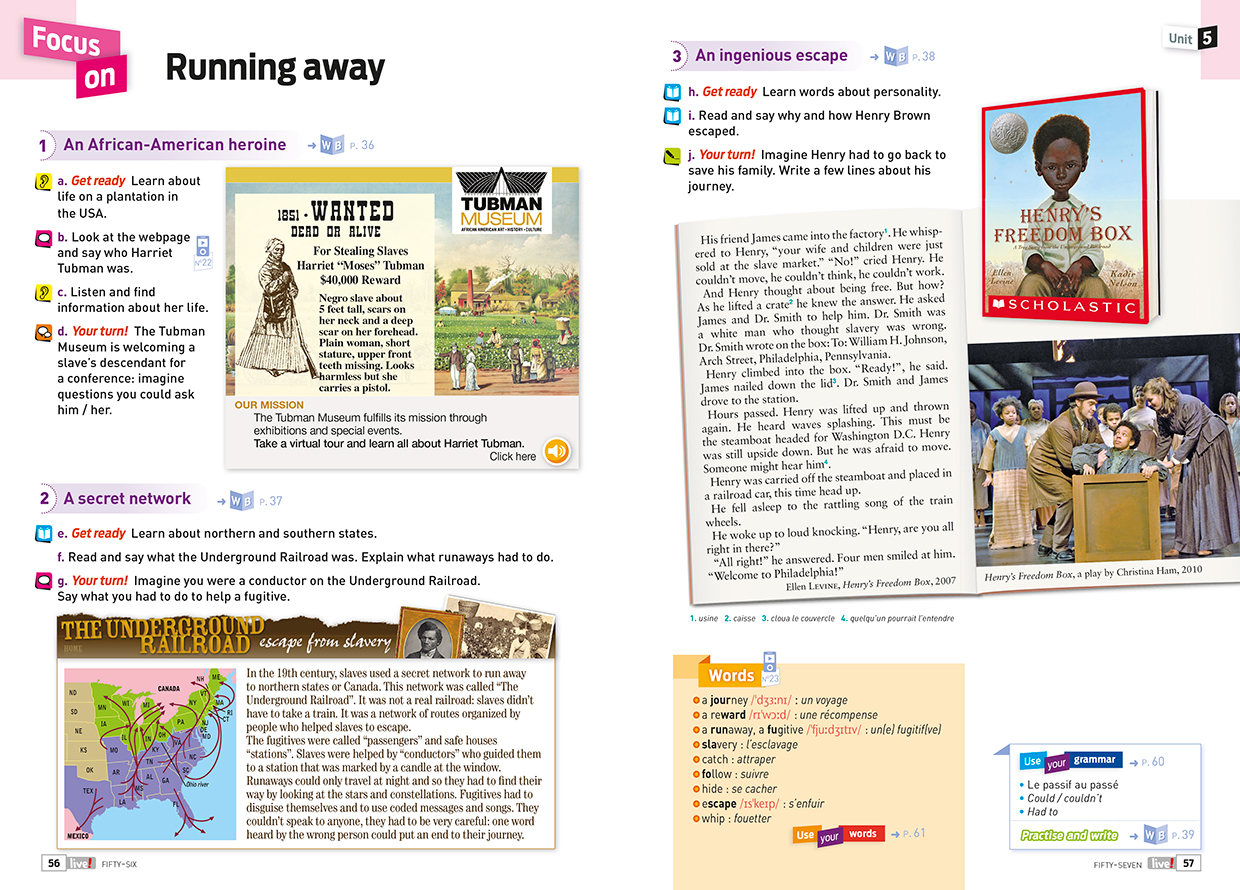This selection of sites and videos is useful for classes on African American history and culture, particularly the civil-rights movement and the Harlem Renaissance
America's Library is a minisite from the Library of Congress written for native-speaking children. It's very simple and clear. It has sections about WEB Dubois (see our article on the Color Line exhibition), Martin Luther King and The Montgomery Bus Boycott including Rosa Parks. It's usable from A2.
This online exhibit about Segregation from the Smithsonian American History Museum has excellent images and extracts. The overall text is difficult – bordering B2. But there are lots of documents and captions that are usable at lower levels.
This exhibit was connected to the Brown v. Board of Education school desegregation case, so there are lots of examples to do with schooling which are particularly meaningful for pupils.
Video
This History.com feature on the Harlem Renaissance gives a good overview of the outpouring of African American creativity in all the arts in the 1920s, with jazz musicians like Duke Ellington and Bessie Smith, authors like Langston Hughes and Zora Neale Hurston and visual artists like Aaron Douglas and William Johnson. It is a good complement to The Color Line exhibition at the Quai Branly.
Both the text and the 3-minute video are understandable from B1.
Telling Personal Stories to Keep History Alive
The wonderful organisation StoryCorps is an oral history archive. It allows any American who wants to to record a reminiscence or a conversation. Its site is a mine of stories that make listeners laugh and cry in equal measure.
For Martin Luther King Day 2018, StoryCorps proposed this short animation based on the moving account of Theresa Burroughs, explaining how it took her two years to finally obtain the right to register to vote as a teenager in 1940s Alabama. Usable from B1. Ms Burroughs' Southern accent may take a little getting used to for pupils, but the animation helps comprehension.
Another gem on a similar theme: an excellent photo story and audio account by a civil-rights activist Dion Diamond, who, as he describes, in 1960, "I was 15 years of age when I started having my own personal sit-ins," against segregation. The recording is beautifully clear and Mr Diamond speaks slowly. Usable from B1.
African-American History Month
The official African-American History Month site has a collection of links to audio and video sources on black history, including:
This audio collection of the “voices of slavery” from the Library of Congress has astonishing recordings of people who were born slaves. We assumed that they would be difficult because of the age of the recordings and the speakers, and often the accents. But the very first one, Fountain Hughes, is crystal clear. The beginning is a great draw in – easy to understand but striking:
“My name is Fountain Hughes. I was born in Charlottesville, Virginia. My grandfather belonged to Thomas Jefferson. My grandfather was a hundred and fifteen years old when he died. And now I am one hundred and one years old.”
The video below from the National Archives is about the Emancipation Proclamation document. The first speaker, archivist Reginald Washington, has quite a strong Southern accent, which may take some getting used to for pupils. But is worth persevering with, especially for the part from 1’45” to 2’27”, an excellent example of the importance of history to populations. Mr Washington discusses a recent showing of the Proclamation at the Henry Ford Museum, which had to stay open 36 hours straight to meet demand to see the document. And there is a look back to the Freedom train in 1947 which took the Proclamation all over the country. The text isn’t immensely difficult, but you may need to use the subtitles below B2 level.
Frederick Douglass
This National Endowment for the Humanities mini-site has several interesting documentaries on slavery and the movement for civil rights.
The one on the Abolitionists starts with a short segment on Frederick Douglass. The voiceover is clear and fairly slow, but some of the vocabulary is difficult. Could be tackled from B1.
This section on Frederick Douglass from the Library of Congress children’s site is suitable from A2. It’s not a very detailed biography but has an excellent quote from Douglass which is understandable. And the part about his writing and speaking on abolition can be used at the same level. There are segments on his escape from slavery and work during the Civil War in two further sections but they assume a certain pre-knowledge of his story, or at least how slaves escaped to the North and the dangers they faced.
Frederick Douglass’s house in Washington, D.C. in is a National Park Service property preserved for historical reasons. Extracts of the NPS biography of Douglass can be used from A2+.
 Give me five! 4e Unit 5 "Journey to Freedom" focuses on
Give me five! 4e Unit 5 "Journey to Freedom" focuses on
Harriet Tubman and the Underground Railroad.
Download a sample page here.
> Montgomery Bus Boycott: A Victory for Civil Rights
> Happy Birthday, MLK!
> Civil Rights: The Montgomery Bus Boycott
Tag(s) : "African American" "art" "civil rights" "Give Me Five 4e" "Harlem renaissance" "history" "jazz" "Segregation" "U.S. history"






